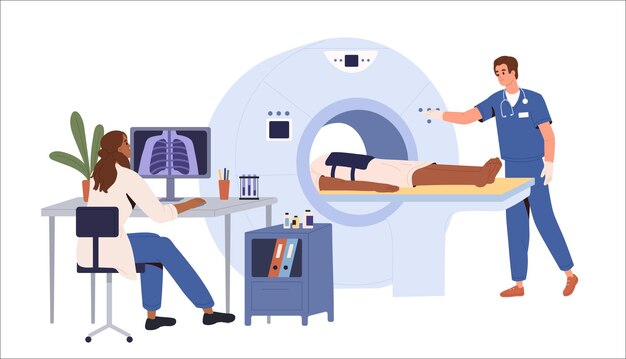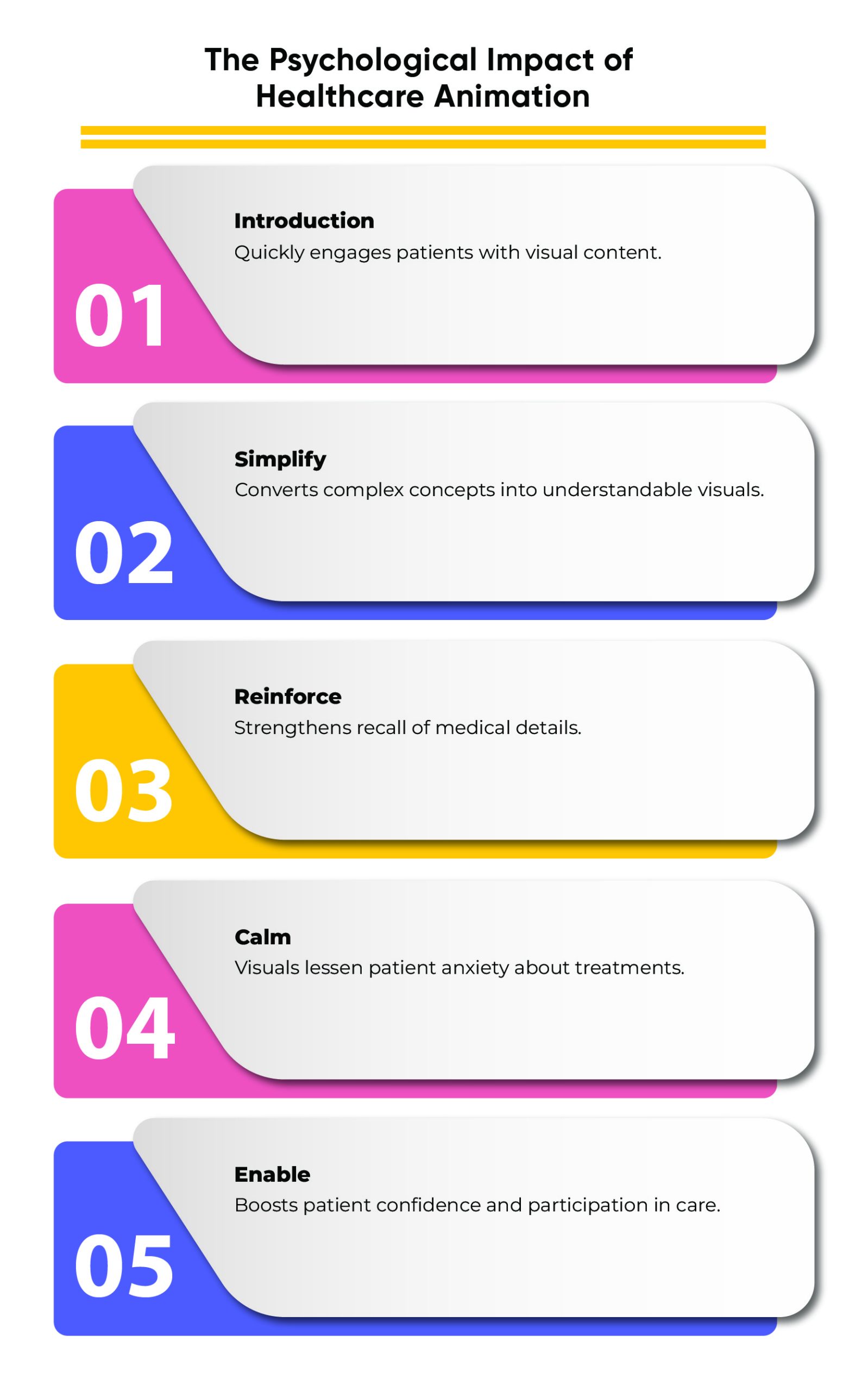Exploring the Impact of Healthcare Animation in Connecticut

Healthcare animation is an advanced tool that Connecticut’s healthcare sector uses to simplify complex ideas. This unique strategy aims to improve knowledge, engagement, and retention among patients and healthcare professionals rather than just improving visual appeal. How healthcare animation in Connecticut is making waves and why it might be the future of medical communication.
The Rise of Visual Learning in Healthcare
As we look through the healthcare information, it is clear that traditional methods of communication are no longer sufficient. Enter healthcare animation videos, a dynamic and engaging tool that breaks complex medical concepts into understandable and memorable content. From explaining complex surgical procedures to illustrating the mechanism of a new drug, animation is improving the way healthcare information is conveyed and comprehended.
Why Animation?
- Simplifies Complex Information: Medical jargon is transformed into easy-to-understand visuals, making healthcare more accessible.
- Increases Retention: Visual and auditory learning through animation enhances memory retention.
- Engages Audience: Animated content is more likely to grab and hold the audience’s attention, making learning an enjoyable experience.
Types of Healthcare Animation: 3D vs. 2D
When it comes to healthcare animation, there’s more than one way to paint the picture. 3D healthcare animation and 2D healthcare animation have unique advantages and applications.
- 3D Healthcare Animation: Offers a lifelike, rich experience, perfect for detailed anatomical and surgical procedure explanations.
- 2D Healthcare Animation: Provides a more straightforward, more stylized approach, great for conveying concepts and processes in a clear, concise manner.
The choice between 2D and 3D animation largely depends on the specific needs of the message and target audience.
Healthcare Video Animation Services in Connecticut
With its historic charm and modern innovation blend, Connecticut is at the forefront of integrating animation into healthcare. Healthcare video animation services in the state are not just about creating content; they’re about crafting stories that resonate, inform, and inspire. These services leverage cutting-edge technology and artistic creativity to produce animations that make an impact.
Crafting Animated Stories for Health
The journey from concept to animation involves several crucial steps:
- Understanding the Brief: Grasping the core message and objectives.
- Scriptwriting: Crafting a narrative that engages and informs.
- Storyboarding: Visualizing the script in a series of sketches.
- Animating: Bringing the story to life through animation.
- Voiceover and Sound Design: Adding the auditory elements to complete the experience.
The Impact: Beyond the Screen
The impact of healthcare animation stretches far beyond the confines of a screen. It connects healthcare providers and patients, creating a community of mutual respect. Animation helps patients actively participate in their medical treatment by demystifying complex concepts.
The Role of Animation in Patient Education and Engagement
- Enhanced Patient Understanding: Patients grasp their conditions and treatment options better.
- Increased Engagement: Engaging content leads to higher patient involvement in their healthcare.
- Improved Health Outcomes: Informed patients are more likely to adhere to treatment plans.

Legal and Ethical Considerations in Healthcare Animation
Creators and healthcare providers in Connecticut must cross a challenging area of ethical and legal issues in the visually captivating field of healthcare animation. These animations, intended to simplify healthcare difficulties for patients and professionals alike, must exercise caution to maintain patient confidentiality, protect privacy rights, and meet high medical ethical requirements.
Respecting Patient Confidentiality
One of the cornerstones of healthcare is the protection of patient information. Healthcare animations often show scenarios that are based on real-life cases or conditions. These representations mustn’t disclose any identifiable patient information, inadvertently or otherwise. Animators and healthcare providers make sure that all content is generalized enough to prevent any potential breach of confidentiality, aligning with HIPAA (Health Insurance Portability and Accountability Act) regulations and other privacy laws.
Upholding Intellectual Property Rights
Healthcare animations are creative works that often involve the collaboration of artists, scriptwriters, and medical experts. Ensuring that these creations are protected under privacy laws is crucial. This covers the animation itself and any original artwork, scripts, and even the specific medical advice provided. Securing copyrights for these works safeguards the interests of creators. It prevents unauthorized use, ensuring that these educational tools remain reputable and trusted sources of information.
Adhering to Medical Ethical Standards
Creating healthcare animations carries the responsibility that any healthcare animation provider must uphold—conveying accurate and evidence-based medical information. This includes a commitment to kindness, meaning the content does not knowingly hurt the audience by oversimplifying complex medical advice or providing incorrect information. The ethical principle of beneficence demands that these animations serve the audience’s best interest, providing valuable insights into healthcare practices and advice that can lead to improved health outcomes.
Moreover, the principle of justice requires that these animations are accessible and beneficial to a broad audience, avoiding any form of discrimination. Animators and healthcare professionals must work closely to make sure that the content is scientifically valid and culturally sensitive, promoting inclusivity and respect for all viewers.
The Role of Informed Consent
In scenarios where real patient stories or scenarios are used as the foundation for healthcare animations, obtaining informed consent is paramount. This involves clearly explaining to the individuals involved how their stories will be used, the purpose of the animation, and any potential for widespread distribution. Ensuring patients are fully informed and agree to use their experiences respectfully and ethically is critical in the production process.
The Future of Healthcare Communication in Connecticut
As technology upgrades, so will the methods we utilize animation within healthcare. Virtual reality (VR) and augmented reality (AR) will surely boost healthcare animation in Connecticut, providing deeper and more effective methods to teach and engage.
The Table of Transformation: Healthcare Animation Milestones
| Year | Milestone | Impact |
| 2020 | Introduction of 2D Animation in Patient Education | Marked increase in patient comprehension and satisfaction. |
| 2022 | Adoption of 3D Animation for Surgical Training | Enhanced surgical training with realistic procedural models. |
| 2023 | Emergence of VR in Anatomy Teaching | Revolutionary immersive learning experiences for students. |
| 2024 | Integration of AR for Patient Interaction | Patients can visualize their conditions and treatments. |
Conclusion of Healthcare Animation in Connecticut
Healthcare animation in Connecticut is not just a trend; it’s a transformative approach to medical communication. By taking advantage of healthcare animation videos, including 3D and 2D healthcare animation, healthcare providers can enhance patient education, engagement, and, ultimately, patient care outcomes. The integration of advanced technologies like VR and AR promises to improve the role of animation in healthcare further, making complex medical information more accessible and understandable for all in the future.
FAQs
Q 1: What is healthcare animation?
Healthcare animation uses animated visuals to explain medical concepts, processes, and treatments in an engaging and easily understandable way.
Q 2: How does animation improve healthcare communication?
Animation simplifies complex information, increases retention, and engages audiences more effectively than traditional text-based methods.
Q 3: What distinguishes 3D animation from 2D animation in the medical field?
2D animation offers a stylized, simplified view, ideal for basic concepts. In contrast, 3D animation provides a more detailed, lifelike representation of complicated medical explanations.
Q 4: Are there any limitations to healthcare animation?
While healthcare animation is highly versatile, its effectiveness depends on the quality of the script, animation, and adherence to medical accuracy.
Q 5: How can I access healthcare animation services in Connecticut?
Numerous studios and agencies in Connecticut specialize in healthcare animation. Itu2019s advisable to research and choose a service provider with experience and a portfolio that matches your needs.










